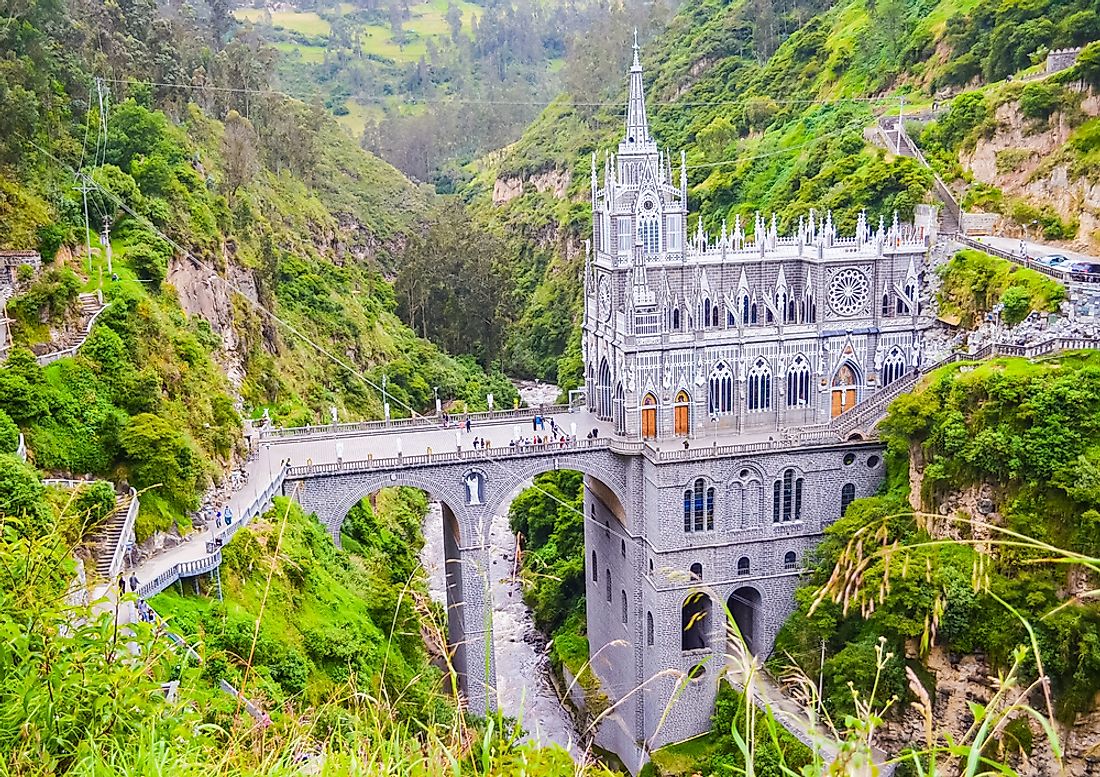Religious Beliefs In Colombia

Colombia is a country situated along the northern tip of South America, and one that is overwhelmingly Christian. 90% of Colombians profess of the Christian faith, with 5% being atheists, and an additional 5% practicing other beliefs. Religion in the country portrays the plurality of its cultural heritages, influenced by Spanish Colonization, Native American heritage, and Afro-Colombian roots alike.
Religious Freedoms
In 1991, constitutional reforms led to the abolition of the then-state of affairs, whereby the Roman Catholic Church was the state church. The constitution contains two articles which advocate freedom of worship Article 13 which states that all people are born free and equal, and must therefore not be discriminated because of religion and article 19 which guarantees freedom of worship, giving people the right to profess any faith. All religions and churches are considered equal before the law.
Religious Tolerance
Although the Roman Catholic Church is predominant in Colombia, other religious beliefs are freely practiced, and the country’s government policies encourage a tolerant environment. The International Religious Freedom Report of 2004 reported amicable coexistence between religions in the country. In addition to Christians, there are Jews, Muslims, African animistic religions, syncretistic faiths consisting of a blend of Catholicism with African animism, and even a Taoist commune. However, according to the report, Jews had been emigrating from the country because of increased violence against their businesses due to economic hardship caused by the recession. Eleven years later, the International Religious Freedom Report of 2015 recorded that Jews were reporting an increase in antisemitism on social media. The Attorney General’s office reported that there were six religiously based killings in Colombia in 2015.There were also cases of illegal armed groups such as the Revolutionary Armed Forces of Colombia (FARC) killing, threatening, and extorting members of religious groups.
Roman Catholic Christianity
The Roman Catholic Church is the largest church in the world, and is also the predominant one in Colombia, with 75% of the population identifying with the faith. It was introduced into the country in the Fourteenth Century by the Spanish colonialists. It was the official religion of Colombia until 1991 when the constitution declared all religions equal. During the colonial period, the Roman Catholic Church ran most public institutions in Colombia, including schools, hospitals, and jails. It also inherited one-fourth of all productive land in the country, but this was later acquired by the government. Each year the country is consecrated to the Sacred Heart of Jesus in a Te Deum directed by the republic’s president.
Protestant Christianity
Protestantism follows the Roman Catholic Church in size, with 15% of the Colombian population identifying with the Protestant faith. Protestantism began during the Protestant Reformation, a movement that started during the Fourteenth Century under the leadership of Martin Luther, with the intention of rebelling against what its followers considered errors in the Roman Catholic Church. In Colombia, the most popular branch of Protestantism is evangelicalism. Evangelicals insist in the authority of the Bible, and the necessity of belief in Jesus Christ. Protestantism was introduced into the country by British soldiers who had come to assist Colombia’s political rebels during their struggle for independence. Many of these soldiers remained after independence, and some wrote letters to Britain and the US, calling for missionaries to evangelize in the new country.
Atheism and Agnosticism
Atheism rejects the existence of God or gods. Agnosticism is the view that the existence or non-existence of God or gods is not verifiable, and therefore agnostics neither believe nor disbelieve. 5% of the population in Colombia has no religious faith. In such a highly religious society, the relations between atheists and believers are strained.
Other Beliefs
Other beliefs collectively account for the remaining 5% of the population of Colombia. These include Jews, Muslims, Animists, and those who practice a syncretic blending of Roman Catholicism with elements of African Animism. While Colombia is largely a Catholic country, there is tolerant coexistence between peoples of different faiths in the country, and the government has ensured that people are not discriminated against because of their religions.
Religious Beliefs In Colombia
| Rank | Belief System | Share of Contemporary Colombian Population |
|---|---|---|
| 1 | Roman Catholic Christianity | 75% |
| 2 | Protestant Christianity | 15% |
| 3 | Atheism or Agnosticism | 5% |
| Other Beliefs | 5% |







